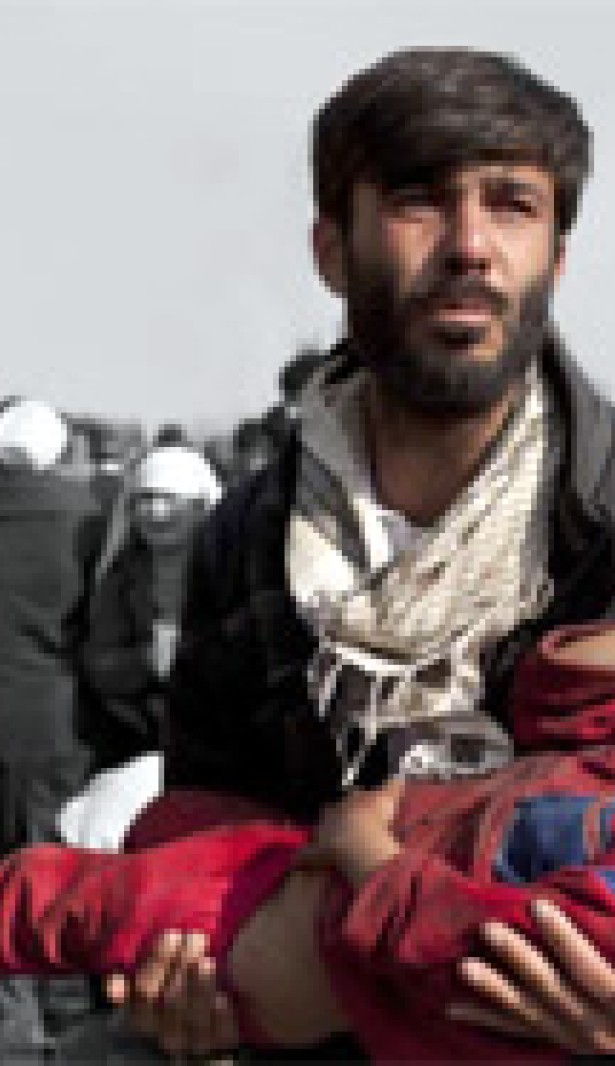Afghan civilians continue to die in record numbers
06 February 2012

I heard the explosion at around 11.45 in the morning. A few minutes later my wife called my mobile phone. She was very upset and difficult to understand. She told me that my 14-year old son had been buying ice at the scene when the detonation occurred. She told me she could see his blood on the road but did not know where he was. I went to the hospital. After some searching among the injured and the dead I found his body. A piece of shrapnel had gone through his head. I passed out and was taken home by friends. My son is dead and his loss is killing me and my wife. He was the only son I had.
Annual Report, Protection of Civilians in Armed Conflict,
prepared by the United Nations Assistance Mission in
Afghanistan (UNAMA) and the Office of the High Commissioner
for Human Rights.
Last year 3,021 civilians were killed in Afghanistan, an eight per cent increase on 2010. The report paints a grim picture, referring to “the unremitting toll of civilian casualties coupled with pervasive intimidation [which] affected many civilians directly, and many more indirectly, by fuelling uncertainty, tension and fear”.
The report says most of those who died, more than 75 per cent, were killed by the Taliban using different and far more deadly tactics, including improvised explosive devices (landmines) and suicide bombings designed to inflict much higher casualties.
Civilian deaths caused by pro-government forces declined by eight per cent. However the number of men, women and children who perished in aerial attacks increased despite the number of such attacks actually declining.
Commenting on the report, UN High Commissioner for Human Rights, Navi Pillay
said, “For five years now, we have seen the cost of the conflict to civilian life grow exponentially in Afghanistan. This year must be the year that cycle is reversed, particularly as the different parties begin to seek peace and reconciliation.”
The Taliban banned the use of anti-personnel landmines in 1998 describing their use as un-Islamic and anti-human, nonetheless, the report says they were used throughout last year “with devastating impacts on civilians.” Almost one in three of all civilians who died in 2011 were killed by landmines.
The number of suicide bombings did not increase over the year but the death toll from them rose by almost 80 per cent. The report says the nature of the attacks changed: they often involved multiple suicide bombers and were designed to maximise casualties thereby attracting more attention.
Targeted killings, including provincial and district governors, provincial and peace council members and local community and tribal elders, were also more frequent the report says and “aimed at terrorizing the civilian population and weakening the Government’s presence in particular locations.”
The fighting shifted in 2011, from the southern provinces into areas in the southeast and east, disrupting the lives of thousands: “Conflict and insecurity displaced 185,632 Afghans in 2011, an increase of 45 per cent from 2010… Thousands more Afghans lost their livelihoods and property, were denied access to justice, had their right to freedom of movement restricted or taken away, and had their access to food, health care and education compromised,” the report says.
The role of the Afghan local police has become increasingly important since the start of the transition, the report says. However, it is too soon to know if local security forces can provide stability in the medium and long-term. “Concerns persisted regarding recruitment of known human rights abusers into [the police] and inadequate vetting, training, command and control, accountability and oversight.”
At the start of 2012 new proposals and ideas for peace negotiations have emerged which the report says must place “the highest priority on protection of civilians in the ongoing armed conflict”.
6 February 2012

VIEW THIS PAGE IN:
